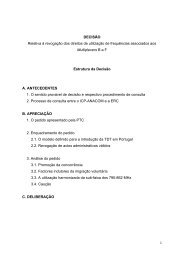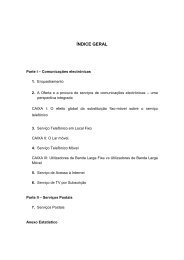The Digital Fact Book - Quantel
The Digital Fact Book - Quantel
The Digital Fact Book - Quantel
- No tags were found...
Create successful ePaper yourself
Turn your PDF publications into a flip-book with our unique Google optimized e-Paper software.
<strong>Digital</strong> disk recorder (DDR)Disk systems that record digital video and generally intended as drop-in replacements forVTRs or as video caches to provide extra digital video sources for far less cost than a DVTR.<strong>The</strong>y have the advantage of not requiring pre-rolls or spooling but they are not necessarilyable to randomly access video frames in realtime. DDRs can also offer the higher datarates needed for uncompressed recordings at an economic price – for SD as well as HDand 2K/4K (film) resolutions.DSee also: Linear, True random access<strong>Digital</strong> intermediate (DI)<strong>The</strong> DI refers to the process that accepts exposed video or film footage and eventuallydelivers edited and graded masters, which either can be internegatives for the productionlabs to generate large numbers of release prints or as digital masters. Initially the term aroseto describe a digital version of the traditional chemical intermediate lab where film isgraded, cut and copied from camera negative to several interpositives and then to manyinternegatives. <strong>The</strong> internegatives are then distributed to the production labs to make therelease prints for cinemas. <strong>The</strong>se processes include creating possibly thousands of releaseprints from a single set of camera negatives.Although the boundaries may vary, generally the DI lab accepts developed camera negative,or data from digital movie/HD cameras, and outputs the edited and graded internegativemaster for a whole or part of a feature. However, the operational and decision-makingprocesses may differ greatly from the traditional film lab, not least because of the interactivenature of the operation. In the DI lab, decisions become on-screen reality and are seenin full context as they are prepared – no waiting for the ‘chemical’ lab. Grading, dissolves,cuts and effects can be seen immediately and on a big screen – if needed. <strong>The</strong> interactiveprocess can be more creative and gives complete confidence that the decisions workwell. Also grading can take place after the footage is cut together, so the shots are seen,as graded, in context.<strong>The</strong> availability of large-scale digital storage means that whole movies can be sent for outputto the digital lab’s film recorder, exposing 1000ft reels at a time and no final grading required.To help feed the growing number of digital cinemas, the DI lab can produce a DSM(<strong>Digital</strong> Source Master) – digital cinema’s equivalent of internegatives.61







